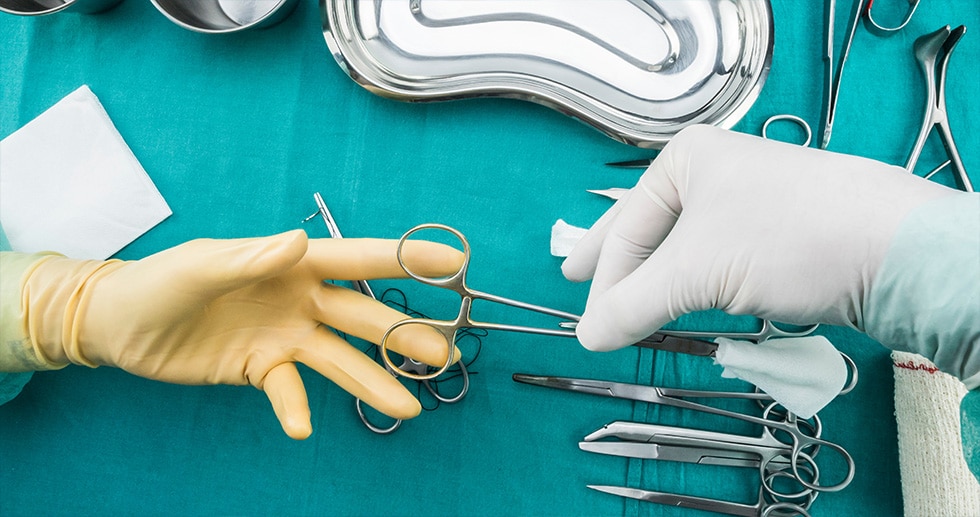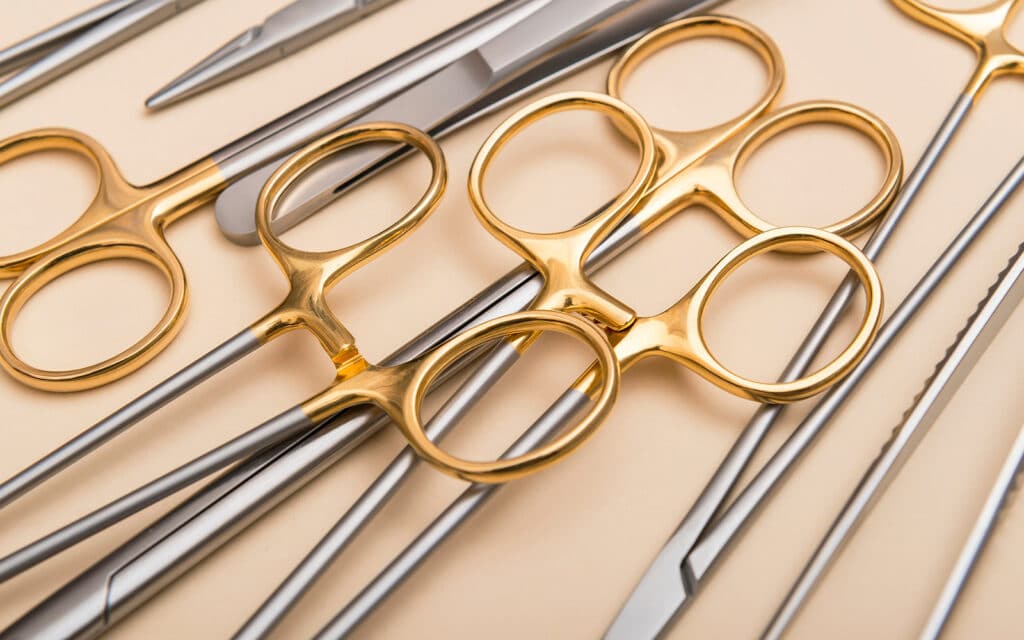
Stainless steel is a strong material that has high levels of corrosion resistance and heat resistance. However, it is not indestructible. As every surgeon and surgical team knows, over time, even the highest-quality stainless-steel instruments begin to degrade. Edges dull, surfaces become pitted and etched, and finishes develop unsightly stains.
This is due both to their use in surgeries and to the cleaning and sterilization processes that must follow each procedure. It is a cycle that very quickly takes a toll on the structural integrity and appearance of instruments of all kinds, including:
- Saws
- Drills
- Taps
- Endoscopic cutters
- Orthopedic tooling
- Handles
- Knives
- Curettes
Fortunately, there is a way to slow the rate at which stainless-steel surgical instruments degrade and extend their useful life. Applying a thin layer of ME-92® chromium coating protects expensive implements and helps ensure that they can function as designed through many more use/cleaning/sterilization cycles than uncoated items.
General Benefits of ME-92® Chromium Coatings for Medical Devices
When applied to any medical instrument, ME-92® chromium coating provides a long list of benefits. First, the proprietary electrolytic process has been thoroughly tested and certified, which gives everyone from device users and patients to hospital administrators peace of mind.
It is also reassuring that this industry-first biocompatible coating is pure-metallic, zero-valence, inert, non-magnetic, USP Class VI, Tripartite/ISO, chemical-resistant, hydrophobic, and antimicrobial. It also reduces galling, fretting, and spalling, and creates a long-lasting, like-new appearance.
In addition, while the coating material will not peel, flake, or chip during use or cleaning, it can be intentionally removed and replaced to further extend the life of an instrument.
In short, ME-92® coating delivers cosmetically and clinically pristine surfaces.

ME-92 coated surgical scissors
Clean, Sterile Surgical Instruments by Design
The cleaning of surgical instruments is a labor-intensive but critical process. According to the Centers for Disease Control (CDC), “The delivery of sterile products for use in patient care depends not only on the effectiveness of the sterilization process but also on the unit design, decontamination, disassembling and packaging of the device, loading the sterilizer, monitoring, sterilant quality and quantity, and the appropriateness of the cycle for the load contents, and other aspects of device reprocessing.”
A key aspect of the “unit design” mentioned in this explanation can be the incorporation of a chromium coating in a device’s design specification. Items can also be coated as a post-production enhancement when the need for a coating is recognized, but applying the material when the item is first produced ensures that it can be easily cleaned and sterilized from the start.
7 Surgery-Specific Benefits of ME-92® Chromium Coatings for Instruments
Applying ME-92® chromium coating to surgical instruments provides surgeons and their teams with many advantages. Seven of the most important benefits for patient safety and procedure efficacy are:
- Certified biocompatibility. ME-92 Operations is the first chromium coating company to pass the tripartite guidelines testing for biocompatibility. That means that the ME-92® chromium coating will not cause toxicity, irritation, or other problems that can lead to undesirable procedure outcomes.
- Increased hardness and resilient cutting edges. Coated tools resist damage from use and cleaning and cutting tools in particular maintain their sharpness longer. That means surgeons can count on instruments to last longer and cut cleanly, and hospitals can spend less on replacing worn instruments.
- Reduced light reflection/refraction/glare. High-intensity light is a requirement in the operating room. However, no surgeon wants to deal with that light being directed into their eyes by a reflective surface, especially at a critical point in a surgery. Chromium coating reduces the amount of light reflected by instruments, giving surgical teams a better view of their work area.
- As-designed performance. With deposit thicknesses of as little as 0.00004” to 0.001” per side (1.0-25.0 microns), ME-92®—coated items maintain the tolerances, balance, instrument weight, and performance they were designed to deliver.
- Elimination of metallic debris/particulates. Uncoated instruments can leave material behind in incision sites, and that contamination can lead to serious post-surgery problems for patients. Chromium coating helps arrest the shedding of particles.
- Reduced coefficient of friction for smooth sliding. During surgery, it is critical that instruments move as expected when in contact with other devices or tissue. Chromium coating ensures that items glide smoothly.
- Easier cleaning and sterilization. The same reduced coefficient of friction that improves functionality during a procedure gives instruments a non-stick surface that makes their cleaning and sterilization much simpler.
Ultimately, ME-92®—coated surgical instruments enable surgeons to achieve their procedure goals, patients to enjoy optimal outcomes, and hospitals to improve the quality of their devices while simultaneously getting more use out of them.